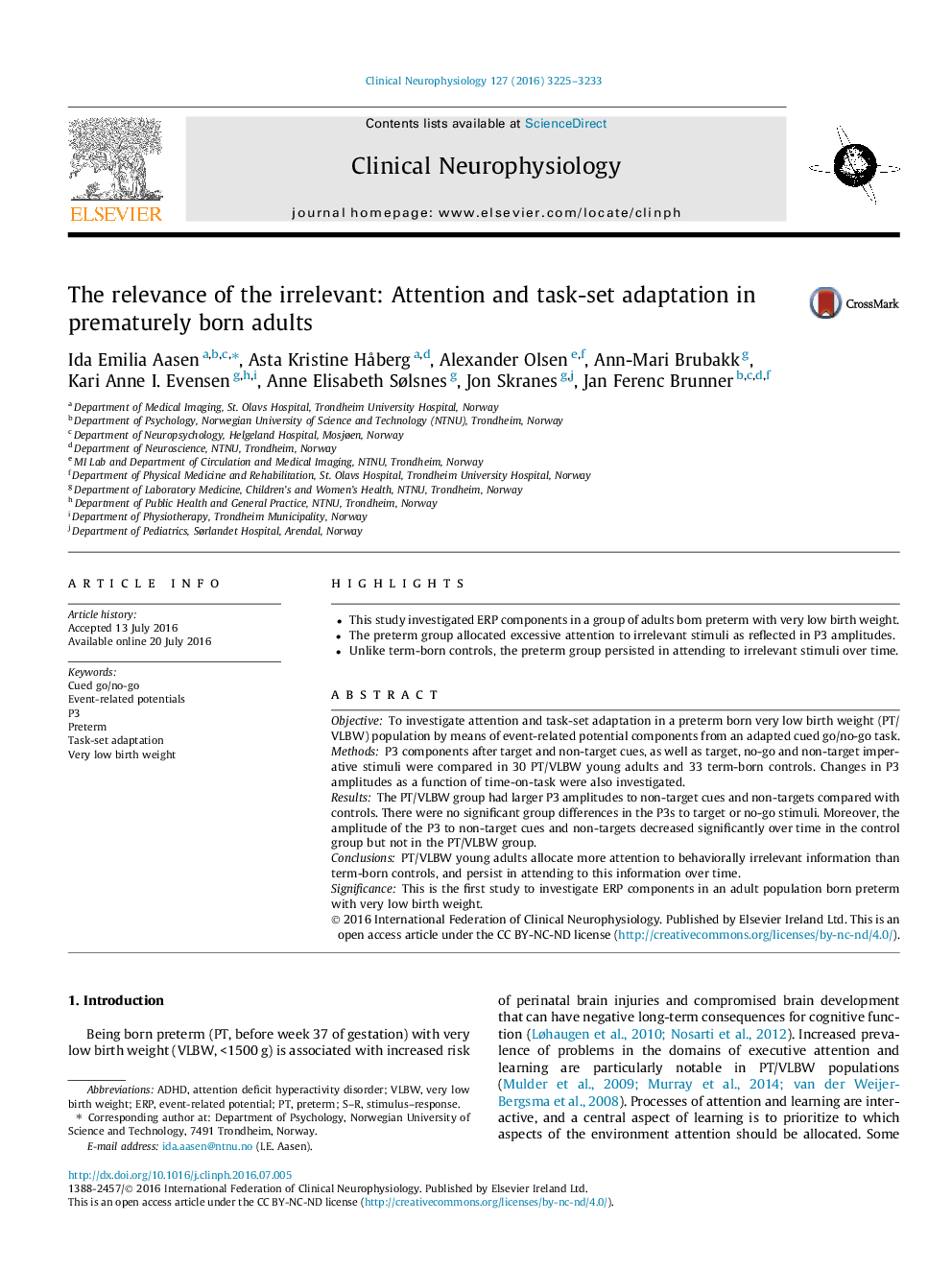| Article ID | Journal | Published Year | Pages | File Type |
|---|---|---|---|---|
| 5627874 | Clinical Neurophysiology | 2016 | 9 Pages |
â¢This study investigated ERP components in a group of adults born preterm with very low birth weight.â¢The preterm group allocated excessive attention to irrelevant stimuli as reflected in P3 amplitudes.â¢Unlike term-born controls, the preterm group persisted in attending to irrelevant stimuli over time.
ObjectiveTo investigate attention and task-set adaptation in a preterm born very low birth weight (PT/VLBW) population by means of event-related potential components from an adapted cued go/no-go task.MethodsP3 components after target and non-target cues, as well as target, no-go and non-target imperative stimuli were compared in 30 PT/VLBW young adults and 33 term-born controls. Changes in P3 amplitudes as a function of time-on-task were also investigated.ResultsThe PT/VLBW group had larger P3 amplitudes to non-target cues and non-targets compared with controls. There were no significant group differences in the P3s to target or no-go stimuli. Moreover, the amplitude of the P3 to non-target cues and non-targets decreased significantly over time in the control group but not in the PT/VLBW group.ConclusionsPT/VLBW young adults allocate more attention to behaviorally irrelevant information than term-born controls, and persist in attending to this information over time.SignificanceThis is the first study to investigate ERP components in an adult population born preterm with very low birth weight.
